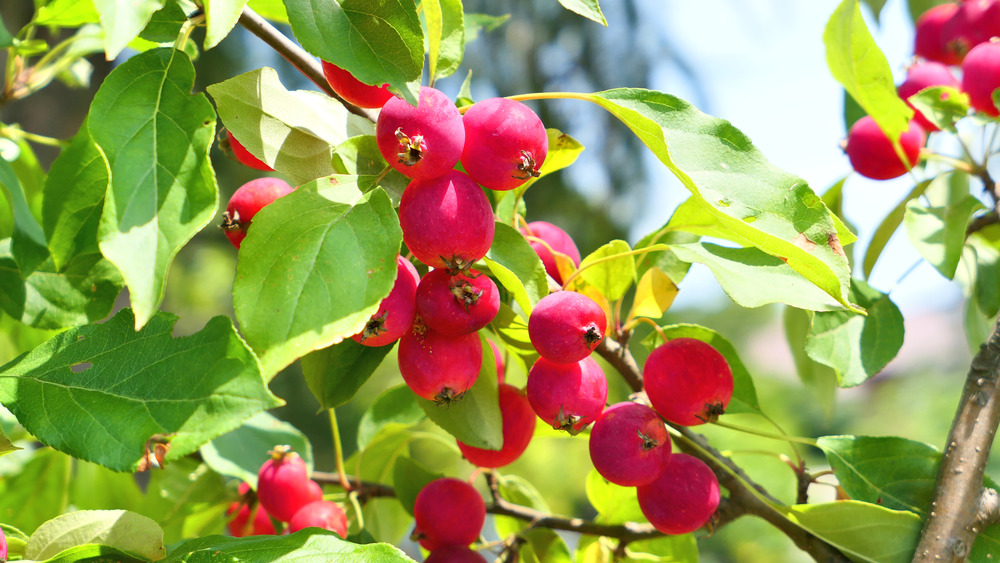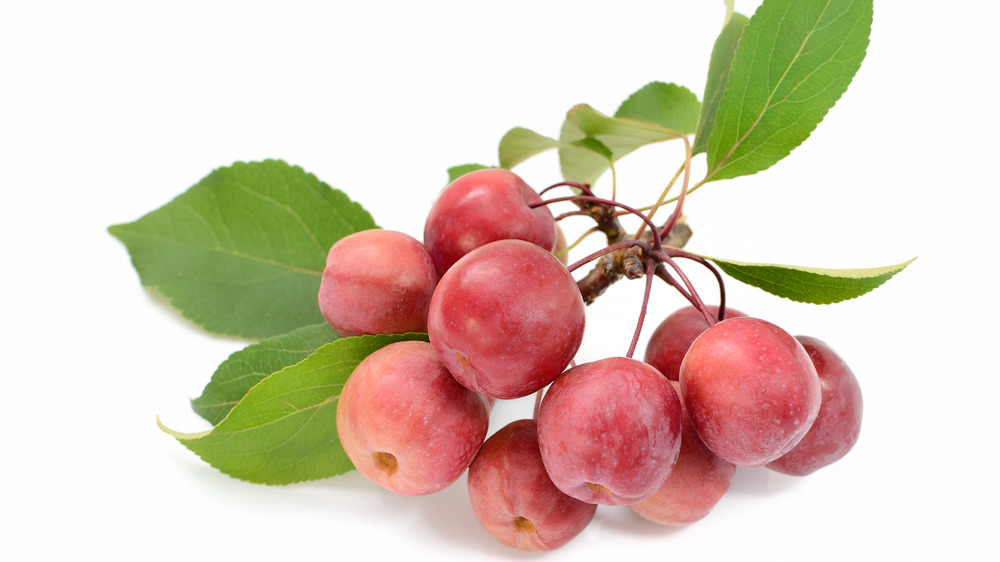Are Crab Apples Safe To Eat?
You may have noticed these lovely decorative blossoms on crab apple trees each fall season. Those trees also contain apples so little they can sometimes be mistaken for cherries. While admiring the fall foliage, have you ever wondered if those miniature apples are edible?
Crab apples, which are typically up to 2 inches in diameter and range in color from yellow and green to red, have earned a reputation over the years as being toxic, but a crab apple is just a smaller version of those we find in the supermarket (via Healthline). The cores of all apples, including crab apples, contain seeds that have small amounts of chemicals called cyanogenic glycoside. These chemicals become cyanide when metabolized.
The good news is that the level of cyanide in fruits like crab apples is very low, so don't panic if you swallow a few seeds accidentally, particularly if you swallow them whole (via Livestrong). You would have to ingest a large amount of crushed seeds to feel the effects, but it would be safest to avoid eating the core and seeds like you normally would anyway.
How to enjoy crab apples safely
However, crab apples can be more dangerous to our furry friends. If your pet consumes a few crab apples, they may develop an upset stomach, and in more serious cases, may start showing signs of cyanide toxicity if they eat too many (via ASPCA). But cyanide toxicity is rare, as the seeds must be ground up and consumed for the cyanide to be released.
The bottom line — crab apples are safe for humans to eat. If you are concerned about the toxicity level, you can remove the crab apple's core, seeds, leaves, and stem before enjoying.
Although they are edible, crab apples may not be your cup of tea. We should warn you that crab apples are known to be more sour and have a stronger taste than their larger apple counterparts. Because of this, crab apples are most commonly used in jams or jellies, or baked and sweetened.


